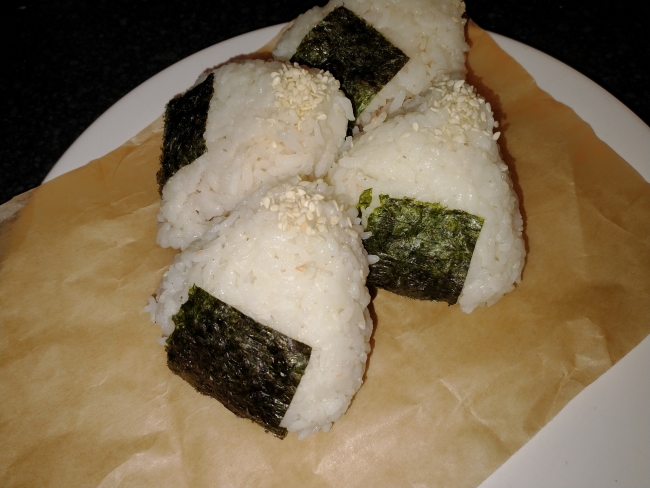Culture | Japan
Onigiri: A Two Thousand Year History
Savory | Snack
Written by: Laura May Bailey
The origins of a delicious Japanese convenience food.
Introduction
Onigiri are traditionally triangle shaped rice balls which can have a variety of fillings and a wrapping of nori seaweed. In Japan, they are a quick and easy snack, eaten at picnics, hiking trips, or packed as part of a bento box for work or school. As they are small, portable and widely available, they have been called the Japanese equivalent of a hotdog or sandwich.
The history of onigiri stretches back two thousand years, to the Yayoi Period (300 BCE to 250 CE). Clumps of carbonised rice were found in ruins by archaeologists. Excitingly, finger marks could even be seen on the rice balls; evidence of people from thousands of years ago using the same techniques we use today. Instead of the thin, processed nori seaweed used for modern onigiri, these were steamed in bamboo leaves.
During the Heian Period (794 to 1185 CE), a version of onigiri called ‘ton-jiki’ were used by elite families as gifts for their domestic servants as well as a convenience food for farm workers. The use of nori seaweed began at the end of the seventeenth century during the Edo Period. So easy and portable were onigiri that they were included in the first school lunches for poor school children in Yamagata during the late nineteenth-century. However, they weren’t just for the poorer classes, onigiri began to be eaten at special occasions such as firework displays and Hanami, the practice of viewing and picnicking under the beautifully iconic cherry blossom.
While the word onigiri simply refers to a ball of rice, the popular triangle shape is linked to Japanese folklore. Legends state that travellers would ask for protection from the spirits (kami) who inhabited nature by shaping the rice into the shape of mountains.
Traditional fillings include Japanese pickled plum (umeboshi), bonito flakes and soy sauce (okaka), cooked kombu seaweed, salted cod roe (tarako), a mixture of tuna and Japanese mayonnaise, and salted salmon (sha-ke) which is included in the recipe below. However, the essence of the onigiri is the rice and seaweed so feel free to get experimental with your fillings!
Recipe
- 1 Cup sushi rice
- 1 ½ Cup water
- 1 piece of grilled salmon
- 1 Pc nori seaweed sheet
- Pinch of Salt
- (optional) Soy sauce
- (optional) Sesame seeds

Instructions
- Place rice into a medium sized bowl, cover with cold wate and rub the rice between your fingers until the water is cloudy.
- Strain off the cloudy water and repeat this process about 5 times until the water stays clear.
- Cover the rice with fresh water and leave to soak for 30 minutes.
- Strain soaked rice and place in a saucepan with 1.5 cups of water, bring to the boil and then cover with a lid and turn down to simmer for 10 minutes until all the water has been absorbed.
- Meanwhile, prepare the filling by seasoning the salmon with salt and crushing with a fork
- Take off the heat and leave the rice to steam with the lid on, when the rice is cool enough to handle, wet your hands and form a handful into a sphere.
- Make a dip in the middle and place 1-2 teaspoons of the salmon inside.
- Mould the rice to cover the filling and press firmly into a triangular shape. Be careful not to press too tightly or the rice will become too sticky.
- Cut a small strip of seaweed and wrap around the bottom. Sprinkle some sesame seeds on top.
- Enjoy with soy sauce!